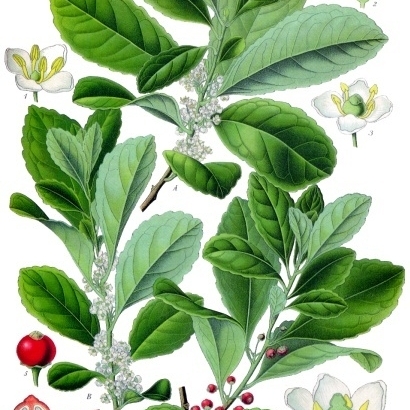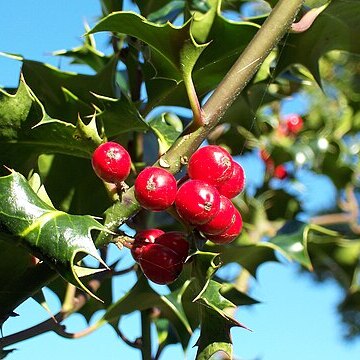Trees or shrubs, the branchlets all elongated or elongated and abbreviated. Leaves with the blades linear to suborbicular, usually persistent (Panama), stipu-late, from very short-to moderately long-petiolate, the margins entire or variously toothed, cut or spinose, glabrous or puberulent, rarely pilose, especially beneath, membranaceous to thickly coriaceous, usually shining and dark green above, paler and duller beneath. Flowers on current growth or on old wood, solitary or fascicu-late, usually axillary to a leaf or forking of branchlets, or laterally single, or singly clustered laterally or axillary at the base of current growth, the clusters one-to many-flowered, forming cyme-like, dichasiate, racemose, corymbose, umbellate, paniculate, or irregularly complex, usually determinate inflorescences, mostly 4-merous, varying (New World) from 4-to 8-(9-)merous (aborted 9 organs excepted), isomerous; calyx usually imbricate, patelliform to cupuliform, in fruit frequently becoming explanate, the lobes shorter, equal to or longer than the tube, usually ovate or deltoid, occasionally irregular, entire or laciniate, ciliolate or eciliolate, acute or obtuse; corolla imbricate, rotate, the petals united at the base (rarely, but not in ours, almost free), usually white, rarely greenish-white, yel-lowish-white, or pinkish-white; filaments usually shorter than but varying to little longer than the petals, thickened at the base; fertile stamens with anthers longer to shorter than the filaments; staminodia with aborted anthers mostly shorter than the filaments, occasionally subobsolete; fertile ovary mostly conic, ovoid or ellipsoid, the style usually lacking, the stigmatic lobes sessile, equal in number to the locules of the ovary, usually united into a punctate to hemispherical stigma, when style present, the stigma subsessile; locules 1-ovulate, the ovules with 1 integument; pistillodium very variable, usually conic to pulvinate, the style usually lacking, the stigmatic lobes free, partly conflent or united, much smaller than the fertile ovary. Fruit ellipsoid to globose, mostly red, sometimes black or dark violet, rarely yellow or white, the calyx and stigma persistent; exocarp usually thin; mesocarp mostly thick, sometimes almost lacking; endocarp mostly hard, coriaecous to stony, surrounding and united with a seed to form a pyrene; pyrenes mostly trigonous, sometimes lanceolate in cross-section, equal to the number of locules of the ovary, in ours 4-8(-10), dorsally smooth or variously striate, sulcate, ridged or canaliculate, laterally smooth to marked (as dorsally), ventrally reduced to a stria.
More
Polygamo-dioecious; fls 4–8-merous, unisexual or sometimes perfect, the pistillate usually bearing stamens with small anthers, the staminate often with a vestigial pistil; cal small but evident, persistent under the fr; pet obovate, shortly connate at base; stamens alternate with the pet, barely adnate to the cor-tube; ovary 4–8-locular; style very short and stout, or none; fr black or red (yellow); trees or shrubs with simple, alternate lvs and axillary clusters of small, white or greenish fls. 300–400, cosmop.
Leaves alternate, rarely opposite or in pseudowhorls, entire or dentate, petiolate, stipulate. Flowers usually pedicellate, in cymes or cymose fascicles or rarely solitary in axils. Sepals small, connate at base. Petals elliptic or oblong, free or united at base. Stamens epipetalous; filaments subulate; stamens reduced to staminodes in female flower, but not seen in Australian material. Ovary sessile, rudimentary in male flower; style usually absent. Pyrenes 1-seeded, smooth, ribbed or striate.
Shrubs or trees, mostly evergreen. Lvs usually alternate. Fls usually unisexual, usually 4-merous; petals connate at base. Stamens sometimes slightly united at base.
Morphological characters and geographic distribution are the same as those of the family.
Petals usually connate at base
Stamens as many as petals


